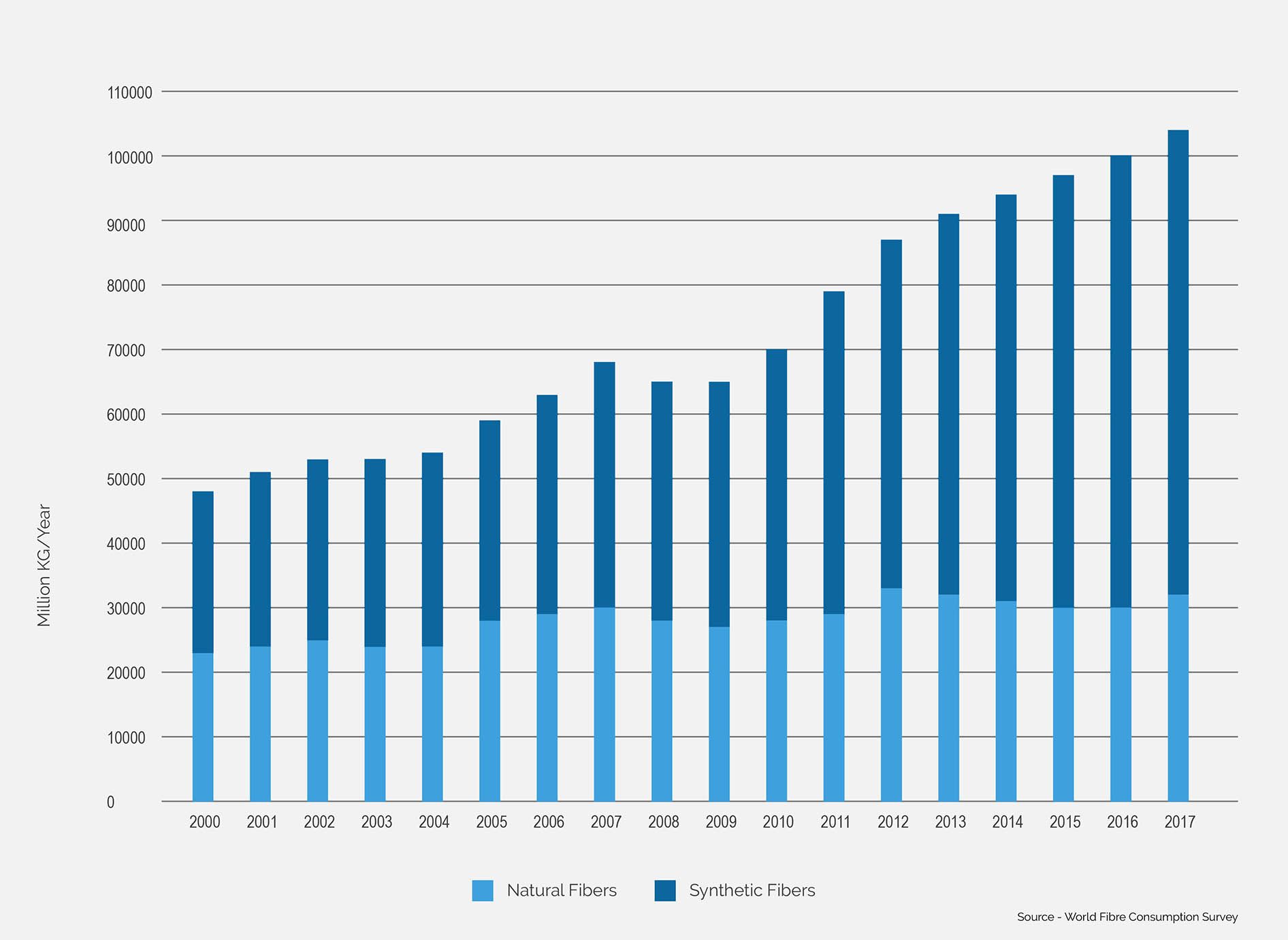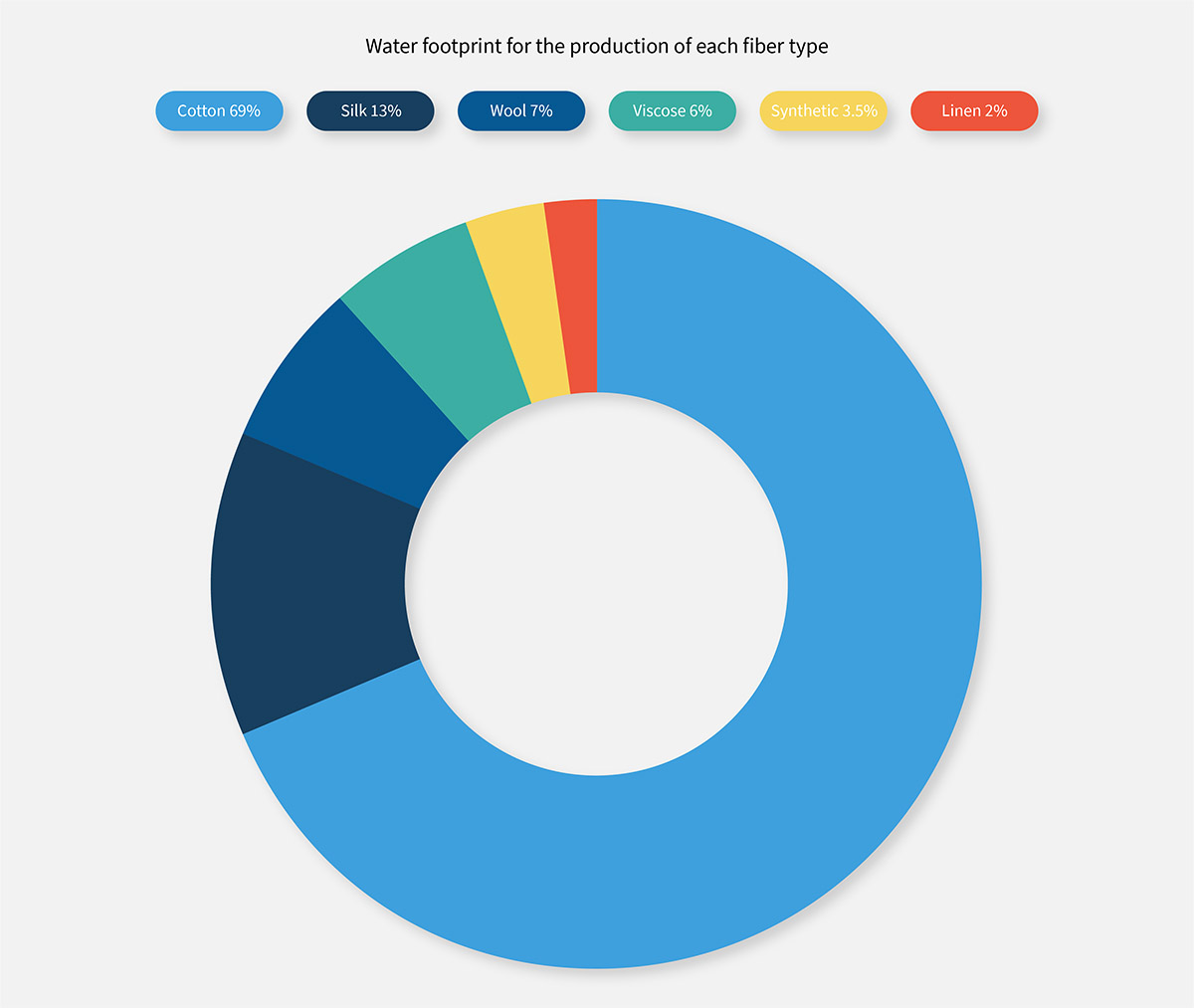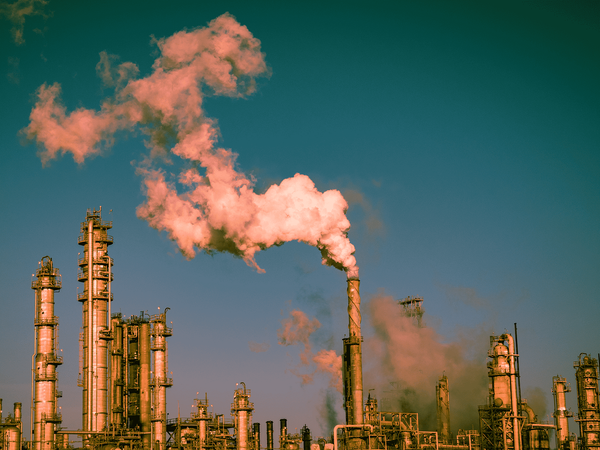Fast Fashion: how it's destroying our planet

Circular Fashion is a solution
The global consumption of the fashion industry was 62 million metric tons in 2019, which is expected to rise to 102 million tons by 2029. Every year, the fashion industry emits more than 1.2 billion tons of CO2 equivalent, which is more than the greenhouse gas emission (GHG) emitted by France, the UK, and Germany combined.
People change their clothes more frequently because of quality degradation, and they have choices of cheaper alternatives. This is called Fast Fashion. According to this article, in 2017, 41% of young women felt compelled to wear something different every time they left the house.
The continuous supply of low-priced clothing is only achievable when the production cost is reduced. To meet this demand, the companies depend on mass production to secure their profit and use lots of low-quality materials. This makes the clothes unusable after a couple of uses.
The research shows that 20% of clothes in the United States and 50% in the United Kingdom are never worn. As a result, are discarded after only a few uses at landfill sites. The Ellen MacArthur Foundation reports that one truck full of clothes is landfilled every second, and according to the BBC, that is 85% of produced textiles.
Current greenhouse gas emissions
The EU imported approximately €166 billion worth of clothes in 2018, which is about a 25% increase compared to 2013. Every year, 70 million tons of trees are sacrificed to meet the fashion industry's demand for wood fibers to create viscose, rayon, and other materials.
For packaging and hangers, the fashion industry consumes a lot of fossil fuel-based plastics and fibers. As shown in Figure 1, the use of synthetic fibers has increased drastically since 2000, except for 2008 and 2009, during the financial crisis. The processing of these fibers is far more energy-intensive, adding up to more adverse climate change effects.

Due to the numerous energy-intensive stages in the value chain, such as production, manufacturing, and transportation, the fashion industry contributes 8-10% of global carbon emissions, which is equivalent to 1.2 billion tons of GHG and 20% of the world’s wastage. At this pace, the emissions are expected to surge more than 50 % by 2030.
The alarming fact is also that the industry uses toxic chemicals such as lead, mercury, and arsenic, from which the untreated hazardous effluents are thrown directly into rivers in most countries. In a textile factory, clean water may get contaminated with fabric dyes. In some cases, effluents and sludge from production processes are often buried or burned as hazardous waste, which becomes exceedingly hazardous to aquatic and human life.
Microplastics are thought to account for between 15% to 31% of all plastic contamination in the ocean. Every time we wash synthetic clothing like polyester and nylon, over 700,000 microfibers are released into the water, eventually ending up in our oceans. Aquatic species consume the microfibers, which are then transferred to our plates through a food chain.
The amount of water consumed by the production houses is also enormous. It is understood that every year the fashion industry uses 93 billion cubic meters of water, which is enough to meet the needs of five million people. It takes about 2,700 liters of water just to create one t-shirt. According to the United Nations Environment Programme (UNEP), it takes 3,781 liters of water to make a pair of jeans, which is equivalent to around 33.4 kilograms of carbon emissions.
Eco-friendly measures taken by fashion industry
The global fashion industry is valued at approximately $2.4 billion, employing 75 million people throughout its value chain. Being the world’s third-largest manufacturing sector after the automobile and technology industries, the fashion industry holds a considerable responsibility to move towards a sustainable solution.
Recently, the big names are advertising their parts in efforts to decrease their contribution to climate change. Burberry's retail and digital packaging has been modified, with at least 40% of the packaging material created from recycled coffee cups.
H&M is taking strides towards a more sustainable fashion future, and it's one of the major shops attempting to address cost and availability challenges. Its products are more affordable, as they are made from recycled and environmentally sourced materials. The Green Machine, developed by H&M, is a system that separates and recycles polyester and cotton-blend garments on a large scale. Other clothing companies, such as Patagonia, have a separate Worn Wear store where they sell used items and reduce waste.
Customers are also getting more concerned about non-sustainable products. In 2019, Forbes indicated that 75% of people are looking for sustainable clothes. Many designers, such as Stella McCartney, have also been pioneers in the fields of environmentally friendly, cruelty-free, inclusive, and ethical fashion. It simply means that individuals are taking interest in a fashion that is created and used in the most sustainable manner possible, taking both environmental and socio-economic factors into account.
Circular fashion
How can we stop fast fashion? By applying the principles of circular fashion. Resale and rental solutions are some currently popular options, offered by Rent the Runway, The Rotation, and Thred Up. However, to make the fashion circular, we must start the fashion revolution right at the beginning of the value chain and design the whole system with sustainable and eco-friendly materials.
The principle of the circular economy states to keep the material in use for as long as possible, by designing out the waste. The current system of fashion has more than 97% of virgin materials. By adopting sustainable biodegradable materials and reusing them, we are decreasing the use of virgin materials and keeping the materials in a value chain for a longer time. Once the materials are used, they can be upcycled to give old materials new life.
However, the challenges still lie in the difficulty of recycling blended fibers. Clothes are made up of blending different fibers to use the best quality of each one in terms of gaining desired properties and price. As shown in Figure 2, different materials that possess different properties have different impacts on the environment. The most commonly used material, cotton, has the largest contribution to the water footprint. The dyeing of the fabrics is one of the most intensive steps that require a huge amount of water.

The more different types of fibers are blended, the more difficult it becomes to sort out and recycle, and hence increases the contribution to environmental impacts. The fashion industry still needs a considerable amount of research and development to deliver recycled materials that possess the same quality as virgin materials. Unless we take care of the material that goes into becoming the clothes first, any action we take later as a cure will not be enough.



